Creatures & You

What character is complete without a noble steed or faithful beastie by their side? Within the Dark Brotherhood's possessions system, you can not only buy weapons, armor, and ships, but companions and mounts for your characters.
The Iron Menagerie is a shop dedicated to the various species of fauna from across the galaxy that are currently able to be purchased and sold within the Dark Brotherhood. With over 140 different species of creatures available, your options are quite open for whatever your character might want as an animal companion. Like with other possessions, you can create custom aspects on your creature’s appearance and even its personality.
This course will help you navigate that system and assist you in determining the types of creatures you may wish to purchase. It will also help you understand the skills your character may need to interact with (or survive) any number of creatures they may come across on their adventures.
Creatures as Possessions
In our system, creatures are classified by type (creature or mount), tameability (ability to be trained) and category (their biological categorization). You can see where any creature fits in each of these classifications by viewing the possession item. For example, a Chirodactyl is an Untameable, Mammal, Companion, as seen below:
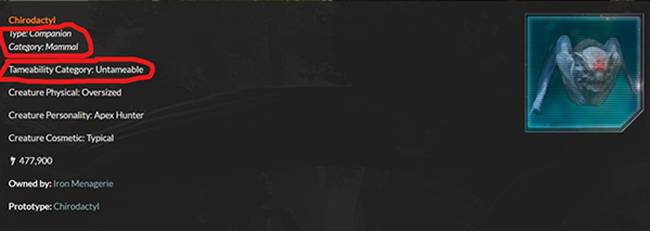
Creatures can be researched and purchased through the Iron Menagerie. If you know the type and category of the creature you’re looking for, you can filter the store’s inventory using the filter icon at the top right of the inventory list. If you're not sure what you're looking for, read on! We'll go over the types and categories of creatures in this course to help you make the best decision for your character.
Creature Types
For simplification, there are two types of creatures in our system: companions and mounts. Mounts can be used for transportation by land, air or sea, and companions are – anything else. As you might guess, then, these terms should be taken rather loosely since it’s unlikely a Krayt dragon will ever call you a “friend,” despite your best intentions.
Since mounts can serve as transportation, they can be slotted in the “Land” section of your character’s loadout. Companions can only be slotted in the companion section.
If you need a refresher on how to manage your possessions or loadouts, check out our course.
Creature Tameability
In the Dark Brotherhood system, all creatures fall under one of three classifications of handling. Those classifications are Domesticated, Tameable, and Untameable. Depending on which of these classifications a creature falls under, that creature will be more difficult for a character to tame, influence or control. Your character’s success in handling these creatures will be determined by their skill in Creature Handling as well as their ability with the Force power Creature Control.
Creature Handling is an individual's ability to “handle” (interact, mount, and ride) a creature. It also measures the individual’s level of empathy and understanding when interpreting a creature's intent or actions. Creature Control is an ability unique to Force-users, which allows them to reach out and make a connection with a target creature. Below we will go into detail about these three classifications, as well as the required ability levels needed to properly handle them.
Domesticated
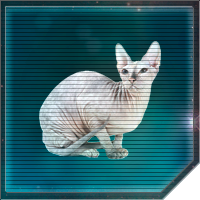
A domesticated creature is one who is frequently found or used in everyday life. These creatures are most often pets, or lifelong companions to an individual. These creatures are usually bred for many generations to achieve the desired attributes and qualities needed to suit a specific purpose. As a result, they can be extremely dependent on a caretaker; without a sentient partner, some may not survive. Domesticated creatures are generally safe to be around. They will rarely go against their masters' commands, and will usually not attack without severe provocation.
At any level of proficiency in the Creature Handling skill, a domesticated creature will usually respond to the commands of your character. At higher levels, starting at rank 3, a domesticated creature will obey any command you give it without fail.
The Force Power Creature Control can be used to connect with a Domesticated animal at any level. The more ranks you have in the power, the less concentration it would take to connect with the creature through the Force. At Rank 4, you can do this without effort.
An example of a domesticated creature is the Felinx, a common, cat-like feline creature.
Tameable
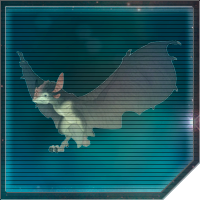
A tameable creature is one frequently found in the wilds of the galaxy. They are far more aggressive than their house-warming counterparts, and will defend their territories from others. Through hard work and dedication, a tameable creature can be trained to obey commands, though the difficulty of this is greater than that of a domesticated creature. When provoked, they will attack and defend themselves.
You may start training a tameable creature with a rank 1 in Creature Handling, but doing so takes great focus and determination. As your proficiency with the skill increases, your understanding and even empathy for creatures will continue to grow, allowing you to better train and form and bond with them. It is not until rank 4 that you can do this without fail.
At rank 2, you can begin to develop a Force connection with a tameable creature using the power Creature Control. The strength of that connection will grow with further ranks, and the effort to exert your control will lessen. At rank 5, you can form a Force connection with little to no effort.
An example of a tameable creature is a Loth-Bat, a giant bat native to Lothal.
Untameable

An untameable creature is one found almost exclusively in the wilds. They are considerably hostile, and should be approached with extreme caution. They are not pets, nor should they be treated as such. Through a vast amount of dedication, time, and effort, a level of respect and bonding can be achieved with these creatures, though they will never be fully tamed or domesticated.
Untameable creatures will begin to entertain your attempts at control at rank 3 of Creature Handling. They will not listen to anyone without the skill or understanding to fully appreciate these creatures. The most amount of control you can hope for is at rank 5, when they can be managed by you while you are by their side.
At rank 3 of the Creature Control power, you can form a basic connection with an untameable creature. Through arduous work, you can grow that connection as you increase your level of understanding of the Force. Creatures will start to be more easily swayed and likely to form a bond with you. At rank 5, with enough focus, you can maintain a working bond with the creature.
An example of an untameable creature is a Greater Krayt Dragon, an enormous apex predator from Tatooine known for their sheer size and ferocity.
Categories of Creatures
Within our possessions system, all creatures are divided into 11 unique biological categories. In this next section, we will explain those categories, as well as give an example of a creature who falls into said category.
Amphibian
An amphibian is a cold-blooded vertebrate animal of a class that comprises frogs, toads, newts, and salamanders. They are distinguished by having an aquatic, gill-breathing larval stage followed (typically) by a terrestrial, lung-breathing adult stage.
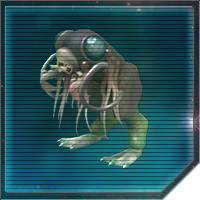
Characteristics
- Vertebrate creatures
- Smooth and slimy skin
- The ability to breathe through their skin, as well as their lungs
- Cold-blooded
- Possess a complex life cycle
An example of an amphibious creature within our system is a Klatooine Paddy Frog.
Aquatic
An aquatic creature is an animal, either vertebrate or invertebrate, which lives in the water for most or all of its lifetime. This includes not only fish, but any creature that can be found underwater.
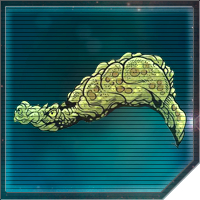
Characteristics
- They have paired and unpaired fins which help them to swim.
- They have either webbed limbs or limbs modified to paddles for swimming.
- Their body shape is streamlined, and their bones are light and spongy.
- The skull undergoes modification to form a slender snout.
- The neck is reduced and external ears have disappeared..
An example of an aquatic creature within our system is an Armored Eel.
Avian
An avian is a class of warm-blooded animals with feathers that generally have the ability to fly. There are forms of flightless avians. The prime example of an avian creature is a bird.
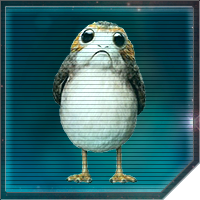
Characteristics
- Feathers
- A toothless beak
- Laying of hard-shelled eggs
- High metabolic rate
- A strong but lightweight skeletal system
An example of an avian creature within our system is a Porg.
Canid
A canid is a mammal that is primarily in the dog family. They are also known as Candidae. Many Canids are domesticated animals, or at least tameable. They tend to be loyal pack hunters.
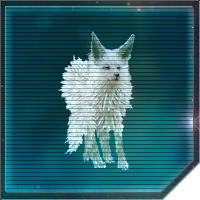
Characteristics
- Canids have deep-chested bodies and a long muzzle.
- The legs and feet of canids are moderately elongated.
- Their stance is digitigrade.
- Usually, five toes are found on the forefeet and four on the hind feet.
An example of a canid within our system is a Vulptex.
Cephalopod

A cephalopod is any of a class of marine creature including the squids, cuttlefishes, and octopuses that move by expelling water from a tubular siphon under the head.
Characteristics
- Have a group of muscular, usually sucker-bearing arms around the front of the head
- Highly developed eyes
- Usually has a sac containing ink which is ejected for defense or concealment
An example of a cephalopod in our system is a Rathtar.
Insect
An insect is any of numerous small invertebrate animals whose bodies are more or less obviously segmented. This can include spiders, centipedes, flies, or numerous other types of creature.

Characteristics
- An insect has a hard outer skeleton (exoskeleton).
- It has a three-part body: head, thorax, abdomen.
- It has multiple sets of legs.
- It may have antennae on its head.
- Most have two pairs of wings. Not all insects fly.
An example of an insect in our system is a Wyyyschokk.
Mammal
Mammals are a group of vertebrate animals constituting the class Mammalia, and characterized by the presence of mammary glands which, in females, produce milk for feeding their young.

Characteristics
- Mammals have hair or fur
- Warm-blooded
- Most are born alive
- The young are fed milk produced by the mother's mammary glands
- They have a more complex brain than other animals
An example of a mammal in our system is a Womp rat.
Mollusk
A Mollusk is an invertebrate of a large phylum which includes snails, slugs, and mussels. They have a soft, unsegmented body and live in aquatic or damp habitats. Most have an external, calcareous shell.
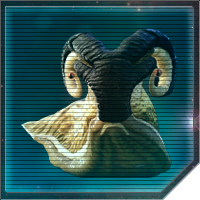
Characteristics
- They are mostly found in marine and freshwater.
- They exhibit the organ system level of organization.
- Their body has a cavity.
- The body is divided into head, visceral mass, muscular foot and mantle.
- The head comprises tentacles and compound eyes.
- The body is covered by a calcareous shell.
An example of a mollusk in our system is a Slyyg.
Reptile
Reptiles are tetrapod vertebrates, creatures that either have four limbs or, like snakes, are descended from four-limbed ancestors. Unlike amphibians, reptiles do not have an aquatic larval stage.
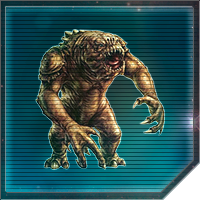
Characteristics
- Have scales or scutes
- Are vertebrates
- Breathe through lungs
- Typically have four legs
- Are cold-blooded (ectothermic)
- Are oviparous (egg laying)
An example of a reptile in our system is a Rancor.
Reptavian
Reptavians were creatures that exhibit both reptilian and avian traits. They are swift creatures, most of which are large enough to ride.
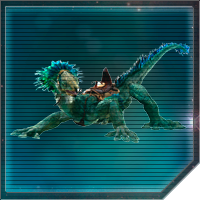
Characteristics
- Have scales or scutes
- Are vertebrates
- Breathe through lungs
- Have wings and a beak
- Are cold-blooded (ectothermic)
- Are oviparous (egg laying)
An example of a reptavian in our system is a Varactyl.
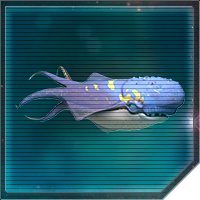
Space-borne
Space-borne creatures naturally inhabit the vacuum of interplanetary or interstellar space.
Characteristics
The only common characteristic in space-borne is the ability to breathe and survive the depths of space.
An example of a space-borne in our system is a Purrgil.
Creature Customization
Despite their type, tameability and category, no two creatures are ever exactly alike. That’s why you have the ability to customize many of the creatures you can purchase by adding cosmetic, physical and even personality aspects to give your companion or mount its own distinct nature. You can even give them a unique name by editing the name in your possessions list!
Again, if you need a refresher on working with your possessions in this way, take our Possessions and Loadouts course!
There are so many types of creatures to choose from in our possessions system. They may act as your character’s friend, pet, companion, mount or weapon, but they all deserve our respect. Take what you’ve learned from this course and use that knowledge to make the best decisions for your character moving forward.
Please log in to take this course's exam